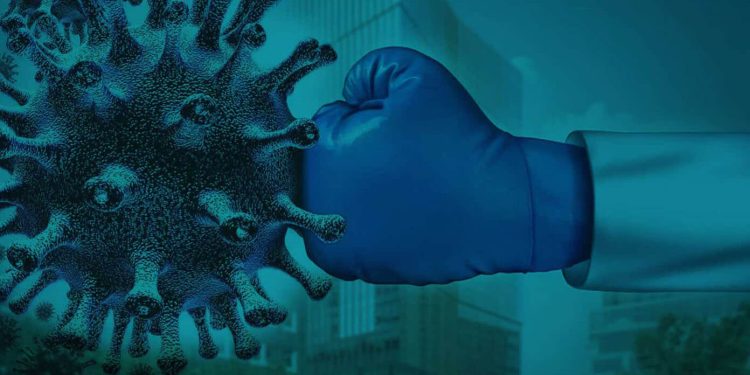From risk assessment to finding a cure for chronic diseases, Artificial intelligence is helping the healthcare industry to gain deeper insights into treatment variability, care processes, diagnostics, and patient outcomes. Considering the huge potentiality of AI and machine learning (ML) in the care quantum, healthcare researchers have, from time to time, funded various projects that transformed the healthcare ecosystem.
Currently, as the world is amidst a life-threatening and rapidly spreading pandemic, the MIT-IBM Watson AI Lab has come forward to fund some ten highly-potential AI projects that aim to combat the economic and health consequences caused due to COVID-19.
Here is a list of those ten AI projects:
Project 1: Early detection of Sepsis in Covid-19 Patients
During the ongoing pandemic, 10% of COVID-19 patients have been diagnosed with sepsis within a week of showing symptoms, and only half of them could survive through it.
If sepsis can be identified early and the patient is put on intensive care at the hospital, the chance of survival may increase. That is why MIT Professor Daniela Rus leading a project along with other researchers to leverage artificial intelligence (AI) in developing a machine learning system that will analyze patients’ white blood cell images to detect signs of an activated immune response.
Project 2: Designing Proteins to Block SARS-CoV-2
In an effort to defeat Coronavirus, MIT professors Benedetto Marelli and Markus Buehler are leading a project that uses a protein-folding method to block the Coronavirus from binding to the host’s cell. The method they are using is similar to what they earlier used in the lab to discover the silk protein made by honeybees that they found to double the life shell of perishable foods.
Project 3: Saving Lives as the U.S. economy Restarts
Even though Coronavirus is still there, businesses in some states in the U.S. are reopening. Therefore, to limit further spread of COVID-19 amidst the economic restart, MIT professors Simon Johnson, Daron Acemoglu, and Asu Ozdaglar are leading a project where they are using artificial intelligence models to analyze and study variable lockdown strategies and their possible impact on public health and the economy.
Project 4: Determining Which Material Is Effective in Protecting Mask Wearers
While wearing a face mask is mandatory to prevent Coronavirus’s spread, there is no standardized method for the evaluation of many masks. Apart from N95 masks, there are a variety of masks available in the market, but no mechanism is at work to evaluate them.
That is why researchers of a project led by Lydia Bourouiba, an MIT Associate Professor, are developing a precise set of methods to evaluate homemade and medical-grade masks’ effectiveness in blocking saliva droplets of mucus released during sneezing, coughing, and breathing.
Project 5: Use of Repurposed Drugs to Treat Covid-19
The project aims to find a cure from the list of already approved drugs is led by Rafael Gomez-Bombarelli, an MIT Assistant Professor and his team of researchers. They are trying to represent molecules in three dimensions to extract spatial information that can be used to identify effective drugs in combating coronavirus. As part of their project, they will use the U.S. Department of Energy’s NSERC and NASA’s Ames supercomputers to expedite the screening process using machine learning.
Project 6: Use of Automated Contact Tracing
COVID-19 is spreading like wildfire, and limiting the spread is essential. For this, the healthcare department needs to trace people who might have contacted the coronavirus infected patients. That is why MIT researchers Ronald Rivest and Daniel Weitzner, in collaboration with MIT Lincoln Laboratory and others, are working towards using encrypted Bluetooth data to trace contacts, keeping identifiable information safe and secure.
Project 7: Ensuring Global Access to Coronavirus Vaccine
We all are aware that only a vaccine can help fight COVID-19. However, what remains a challenge is the equal and rapid distribution of vaccines globally. Addressing the possible manufacturing and supply challenges, MIT professors Anthony Sinskey and Stacy Springs are leading a project with other researchers that aim to build data-driven statistical models to make informed decisions and make the vaccine accessible to the world in a cost-effective way.
Project 8: Leveraging Electronic Medical Records (EMR) to Find COVID-19 Cure
Already in the US, the anti-viral drug remdesivir that was developed for Ebola treatment is being clinically tested to check its potentiality in COVID treatment. Following a similar strategy, MIT professors Roy Welsch and Stan Finkelstein are using ML, statistics, and simulated clinical trials to analyze millions of EHR data to see if any of the already-approved drugs can be reused against COVID-19.
Project 9: Finding better ways to treat Covid-19 patients on ventilators
As COVID patient count increases, there is a shortage of mechanical ventilators. Together with IBM researchers Daby Sow and Zach Shahn, MIT researchers Li-Wei Lehman and Roger Mark are using AI and COVID patient data from a local Boston hospital and data of intensive-care patients with acute respiratory distress syndrome. They will develop a tool to help doctors identify the right ventilator settings for infected patients and determine the right duration for which patients should be kept on the machine. In this way, they hope to limit lung damage caused to the patient in the absence of a machine.
Project 10: Bringing the World Back to Normal with Targeted lockdowns, Personalized treatments, and Mass Testing
In the first phase of a project led by Dimitris Bertsimas, an MIT Professor, and his group of researchers plan to study the impact of lockdowns and other government measures formulated to prevent new infection cases and deaths. Going ahead in the second phase, they will build ML models to predict the vulnerability of patients to COVID-19 and what kind of personalized treatment will prove effective for them. Also, they plan to develop a spectroscopy-based test for COVID-19 that will be inexpensive as well as deliver the result in minutes. For the project, data will be fetched from four hospitals in Europe and the US.







